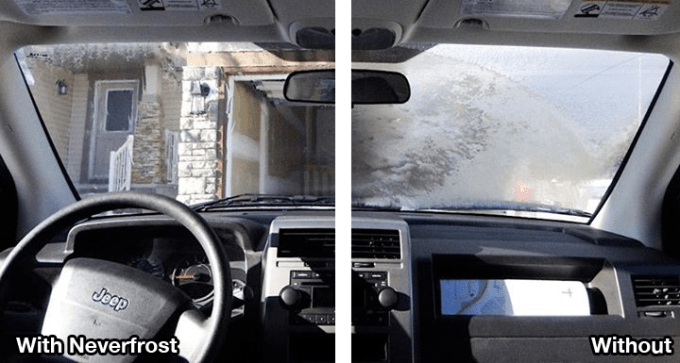
I’m a fan of all different sorts of rocks. Rock music. Rock gardens. Dwayne “The Rock” Johnson.
But there’s one type of rock that I — and most other drivers, I imagine — hate with a deep, fiery passion: rocks that hit my car’s windshield at 70 mph.
Few things so small can wreck your day so suddenly. Everything is going great. The sun is shining. Hell, you probably even have time to grab some coffee before your meeting with — *BAM!*, you’ve got a 2-inch scar streaking across your once flawless glass.
Neverfrost, a YC-backed company that has been working away quietly up in Waterloo for the past few years, wants to beef up your windshield’s ability to handle the stray rocks that may come its way — and while they’re at it, they want to end windshield frosting and help drivers save fuel by keeping their car’s interior cooler.
Neverfrost began its life in the University of Waterloo’s Nanotechnology Engineering program, where it was initially a fourth-year design project for the company’s founders, Khanjan Desai and Chong Shen.
Here’s what Neverfrost is claiming its film can do:
- Reduce frost forming on the windshield by about 95 percent. It’ll still form on reaaaally cold nights; but Khanjan tells me that even that frost should be considerably lighter than it otherwise might be. It’ll also make snow considerably easier to scrape off, as it won’t be able to stick.
- Increase your windshield’s resistance to rocks by up to 6x. This is possible because the material is on the exterior of the glass (unlike most tints, which go on the inside), and is a bit softer than the glass itself. When a rock hits the film, the force is spread across a wider area.
- It’ll reject 90 percent of infrared heat from the sun, which Khanjan tells me is about 40 percent of the total solar energy that’ll enter and heat up your car. That means less A/C required to keep things cool, and thus less fuel burned powering your A/C.
- It does this with minimal impacts on optics; it’ll allow 88 percent of visible light through your windshield, which is only about 2 percent less than what most bare glass windshields allow and should be within legal limits in the U.S. and Canada.
(Note that these stats are from the company’s tests, and are not something I was able to personally test. Once the film approaches commercial availability, I’ll happily fire some rocks at my car’s windshield in the name of science.)
So how does it work? While the company doesn’t reveal every ingredient in its secret sauce, they explain the product as “nano-composites sandwiched in a single 100-micrometer-thick film.”
Wondering how can you get Neverfrost for your windshield?
For now at least, you can’t. It has to be professionally applied by an authorized dealer, and they’re primarily working with trucking fleets in California and Ontario for now — because no one knows the pain of a chipped/frosted windshield like the folks who drive across the country all-day-every-day for a living.
That said, the company tells me that it hopes the product will be available commercially to consumers by next fall. Interested parties can sign up for more details here.
One interesting thing to note about the company: unlike many (most?) YC-backed companies, Neverfrost isn’t planning to make Silicon Valley its home any time soon. It needs to be somewhere cold to test and iterate on their product, and the Valley isn’t exactly known for its snowfall.
